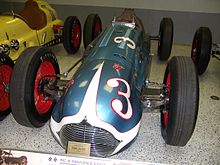
The 38th International 500-Mile Sweepstakes was held at the Indianapolis Motor Speedway on Monday, May 31, 1954. The event was part of the 1954 AAA National Championship Trail, and was also race 2 of 9 in the 1954 World Championship of Drivers.

The 39th International 500-Mile Sweepstakes was held at the Indianapolis Motor Speedway on Monday, May 30, 1955. The event was race 1 of 11 of the 1955 AAA National Championship Trail and was race 3 of 7 in the 1955 World Championship of Drivers.

The 40th International 500-Mile Sweepstakes was held at the Indianapolis Motor Speedway on Wednesday, May 30, 1956. The event was part of the 1956 USAC National Championship Trail and was also race 3 of 8 in the 1956 World Championship of Drivers. The 1956 race was the first to be governed by the United States Automobile Club. AAA withdrew from auto racing the previous August. Another change would have a more immediate effect on the current race. The track had been paved over with asphalt with only about 600 yards of the main stretch still remaining brick.

The 41st International 500-Mile Sweepstakes was held at the Indianapolis Motor Speedway on Thursday, May 30, 1957. The event was part of the 1957 USAC National Championship Trail and it was race 3 of 8 in the 1957 World Championship of Drivers.

The 46th International 500-Mile Sweepstakes was held at the Indianapolis Motor Speedway in Speedway, Indiana on Wednesday, May 30, 1962.

The 29th International 500-Mile Sweepstakes Race was held at the Indianapolis Motor Speedway on Friday, May 30, 1941. The start of the race was delayed due to a fire that swept through the garage area on race morning. No persons were injured, but one car in the field was destroyed. The race rolled off with only 31 cars, and ran to its scheduled distance. This would be the final "500" prior to the United States involvement in WWII. It was not known at the time, but it would be the final race organized by Speedway president Eddie Rickenbacker, and due to the war, the race would not be held again until 1946.
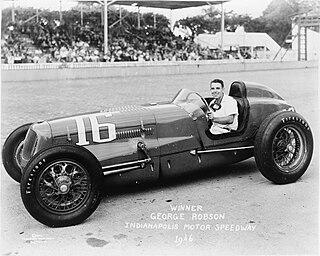
The 30th International 500-Mile Sweepstakes was held at the Indianapolis Motor Speedway on Thursday, May 30, 1946. This was the first Indianapolis 500 presided over by new track owner Tony Hulman. The track had closed in late 1941 due to World War II, and over the next four years, the facility fell into a terrible state of disrepair. Hulman purchased the Speedway in November 1945, and quickly went to work cleaning up the grounds, which had become overwhelmed by overgrowth and weeds. The Speedway re-opened, and the 1946 race was considered a rousing success.

The 7th Liberty 500-Mile Sweepstakes was held at the Indianapolis Motor Speedway on Saturday, May 31, 1919.
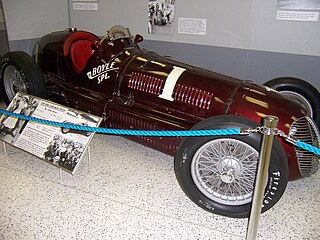
The 28th International 500-Mile Sweepstakes Race was held at the Indianapolis Motor Speedway on May 30, 1940. The winner was Wilbur Shaw in the same Maserati 8CTF he had driven to victory in 1939. Shaw became the first driver in the history of the race to win in consecutive years. It also marked Shaw's third win in four years, making him the second three-time winner of the race. Shaw's average speed was 114.277 mph, slowed by rain which caused the last 50 laps to be run under caution. Shaw took home $31,875 in prize winnings, plus additional prizes that included a car and a refrigerator.

The 27th International 500-Mile Sweepstakes Race was held at the Indianapolis Motor Speedway on May 30, 1939. The race was won by the number two car of Wilbur Shaw, who started in the third position, driving a Maserati 8CTF. The race was notable for a three car accident on lap 109, when Floyd Roberts, the reigning champion, was killed when his car went through the wooden outer wall at over 100 miles (160 km) an hour at the backstretch. In Louis Meyer's final Indy 500, he too would crash at the backstretch at over 100 miles (160 km) an hour, but he walked away unharmed.
The 24th International 500-Mile Sweepstakes Race was held at the Indianapolis Motor Speedway on Saturday, May 30, 1936. The race was part of the 1936 AAA Championship Car season. The race is remembered for three noteworthy Indy traditions getting their start.
The 23rd International 500-Mile Sweepstakes Race was held at the Indianapolis Motor Speedway on Thursday, May 30, 1935. Despite attempts to improve participant safety by requiring crash helmets and installing green and yellow lights around the track, the event that year would prove to be one of the worst in terms of fatalities.
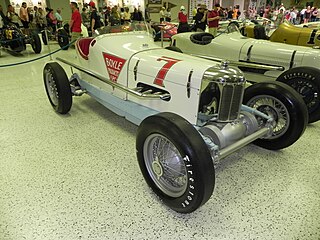
The 22nd International 500-Mile Sweepstakes Race was held at the Indianapolis Motor Speedway on May 30, 1934. The winner was the number seven car driven by Bill Cummings, an Indianapolis native, at an average speed of 104.863 miles per hour. Cummings led for 57 laps total, including the last 26. Of the 33 cars that began the race, only 12 were running at the finish, although there were no crashes resulting in serious injuries. One serious incident involved George Bailey, whose car went over the outside wall, but resulted in only a broken wrist to the driver. The finish was the closest in the history of the race to that point, with second-place finisher Mauri Rose within 100 yards of Cummings at the finish. Rose would also file a protest that Cummings had illegally gained ground during a "slow-down" period following a crash.
The 21st International 500-Mile Sweepstakes Race was held at the Indianapolis Motor Speedway on Tuesday, May 30, 1933. Louis Meyer defeated Wilbur Shaw by a time of 401.89 seconds. The average speed of the race was 104.162 miles per hour (167.632 km/h) while Bill Cummings achieved the pole position with a speed of 118.521 miles per hour (190.741 km/h). The race was part of the 1933 AAA Championship Car season.

The 20th International 500-Mile Sweepstakes Race was held at the Indianapolis Motor Speedway on Monday, May 30, 1932. Attrition was the story of the race, with 26 of the 40 cars dropping out due to crashes or mechanical failure. A record eight different drivers led laps during the race, with no driver seemingly able to hold the lead without experiencing some sort of trouble. For the third year in a row, Billy Arnold looked as if he would be the dominant car, but he sailed over the turn three wall on lap 59. Rookie Bob Carey also hit the wall while leading. Fred Frame took the lead for good on lap 152, and won from the 27th starting position - the furthest back of any winner except for Ray Harroun in 1911 and later, Louis Meyer in 1936. Frame was accompanied by riding mechanic Jerry Houck.
The 19th International 500-Mile Sweepstakes Race was held at the Indianapolis Motor Speedway on Saturday, May 30, 1931. Race winner Louis Schneider, who led the final 34 laps, was accompanied by riding mechanic Jigger Johnson.
The 18th International 500-Mile Sweepstakes Race was held at the Indianapolis Motor Speedway on Friday, May 30, 1930. The race was part of the 1930 AAA Championship Car season.
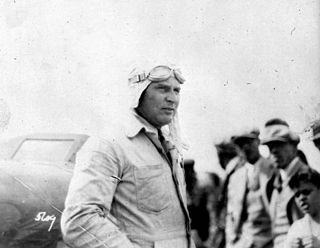
The 17th International 500-Mile Sweepstakes was held at the Indianapolis Motor Speedway on Thursday, May 30, 1929. Ray Keech, who finished fourth a year earlier, took the lead for the final time on lap 158 and won his first Indianapolis 500. Keech won for car owner Maude A. Yagle, the first and to-date, only female winning owner in Indy history. Only two weeks after winning the race, Ray Keech was fatally injured in a crash at Altoona Speedway on June 15, 1929. The race was part of the 1929 AAA Championship Car season.

The 16th International 500-Mile Sweepstakes Race was held at the Indianapolis Motor Speedway on Wednesday, May 30, 1928. This was the first Indianapolis 500 presided over by new Speedway president Eddie Rickenbacker. Rain threatened to wash out the day, but the showers stopped and the race started on time. One brief shower slowed the race around the 400-mile mark, bringing out the yellow flag for a few laps.
The 1947 AAA Championship Car season consisted of 11 races, beginning in Speedway, Indiana, on May 30 and concluding in Arlington, Texas, on November 2. The AAA National Champion was Ted Horn, and the Indianapolis 500 winner was Mauri Rose.
